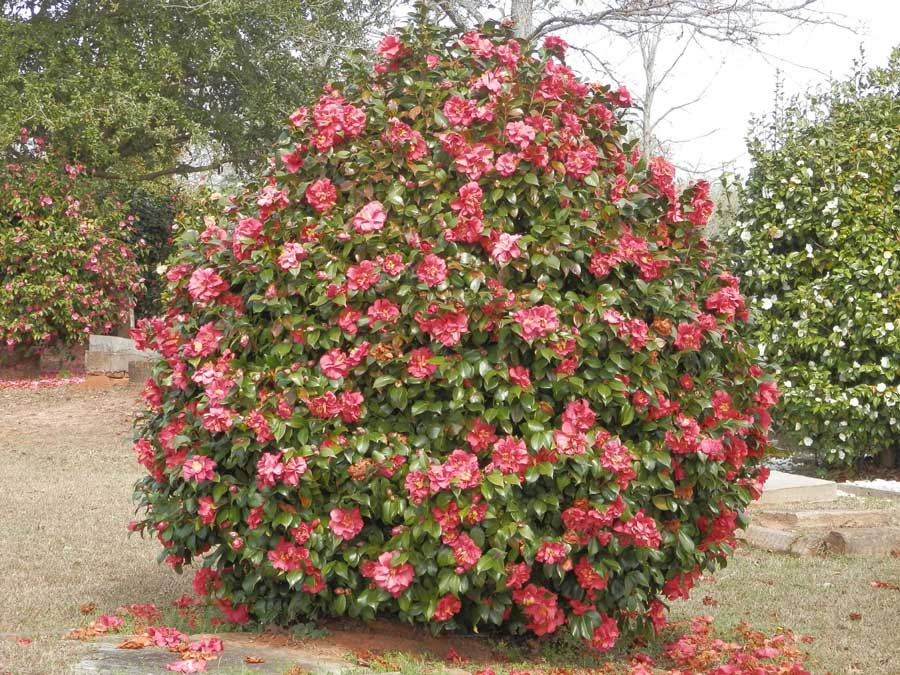Recently, I discovered that Massee Lane Gardens is recognized as a National Register Historic Place. I was fascinated by the history of the gardens and thought you might be, too. Here is an excerpt from the original National Register of Historic Places application form filed August 31, 1979.
“The American Camellia Society headquartersconsists of two major formal gardens, in front and behind the Williamsburg style headquartersbuilding. Brick walks are utilized throughout the gardens which feature, in addition tocamellias, daffodils, day lilies, magnolias, gardenias, Confederate jasmines, tea olives, androses. Millstones and mile posts are also used, often to define walks. Excellent condition.
This property was originally part of Needham Massee’s plantation,settled in 1827. Dave Strother acquired a portion of that farm in the early 1900’s andbegan growing peaches. A 1936 storm destroyed his farm, and instead of replanting peacheshe began designing the formal camellia gardens. This was a period of great interest inhorticulture in Marshallville, as evidenced by J.D. Wade’s planting of crepe myrtles alongHwy. 49. Marshallville, with Strother and Wade in the foreground, hosted several large
camellia shows in the 1940’s and 50’s. In 1966, Strother donated his farm and a considerableamount of cash for a headquarters buildingto the American Camellia Society. It hasbeen used by the Society since that time.
Areas of Significance: Landscape Architecture
Statement of Significance: The formal gardensat Massee Lane are important as one of the highest expressions of Marshallville’s interestin landscape architecture. Camellias were brought to the community around 1850 from South Carolina and can still be found in small formal gardens near many of the houses. AlthoughMassee Lane’s period of significance is less than 50 years old, it should nonetheless beincluded in the National Register because of its great artistic value and its representation
of a long-time area of interest to the community.”
After reading this, I was curious about the millstones and mile markers. It would appear that Dave Strother not only collected camellias, but, he also collected 39 millstones from local abandoned gristmills, and granite mile markers. Many of the mile markers are from the Old Wire Road – named for the first telegraph line in the Southeast. He utilized these millstones and markers as part of the pathways throughout the gardens and created seating out of some of them.
Knowing the history behind my favorite places to visit makes me enjoy them even more. Hope it helps you decide what to do on your next visit to see us.
Thanks for visiting the Americus Garden Inn blog. Looking forward to seeing you soon.
Love,
Susan

